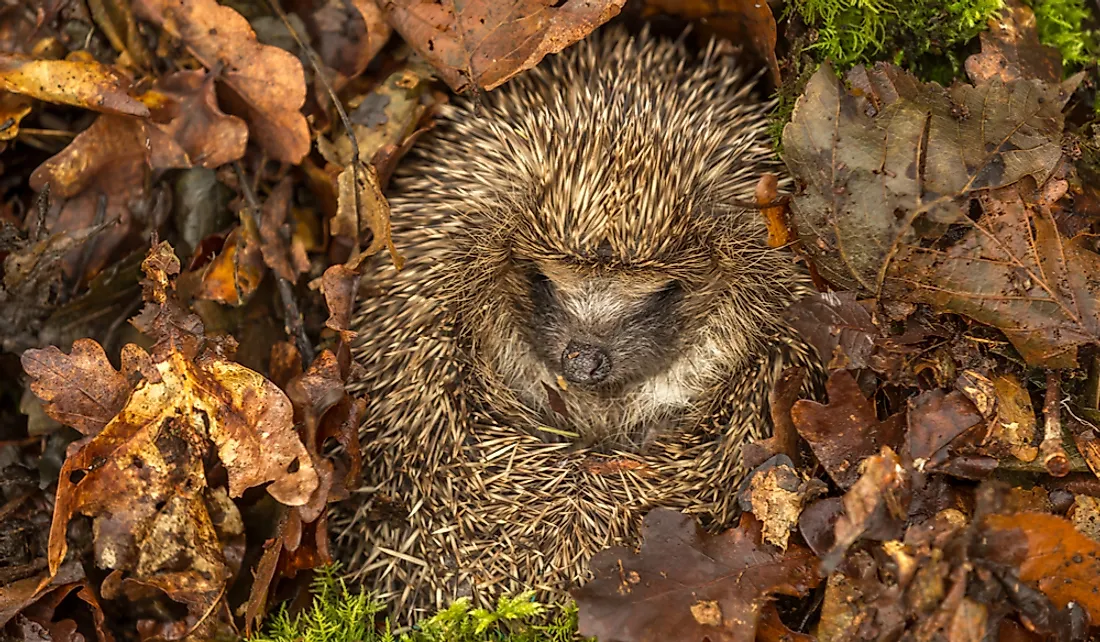Do Hedgehogs Hibernate?

Hibernation refers to a state of metabolic inactivity in endotherm organisms. This inactive state is characterized by reduced body temperature, low heart rate, slow breathing, and reduced metabolism. Hibernation typically occurs during cold months, while the equivalent state during warmer months is known as aestivation. Most mammals do not hibernate, and those that do hibernate do not fit the traditional definition of hibernation. For example, animals that undergo daily torpor are now classified as hibernators. However, hedgehogs are one of the few mammals that are classified as true hibernators.
Hedgehog Hibernation
During hibernation, hedgehogs enter a state that resembles deep sleep. In this state, the hedgehog lowers its body temperature to match the ambient or surrounding temperature. This state is actually referred to as torpor, which is a form of hibernation. Normally, hedgehogs eat plenty of food that is stored as fat, and during hibernation, these stored reserves are vital to the animal’s survival.
Hedgehogs usually hibernate during colder months. Research shows that most hedgehogs begin hibernation in either October or November, and can remain in the state until as late as March or April. In most parts of the world, this period usually represents the coldest temperatures of the year. In some cases, this period may be shorter or longer, which means that hedgehogs will adjust accordingly. In addition, the hedgehog will only hibernate when it has stored a sufficient amount of energy, which is why some can be observed as late as December.
A hedgehog's hibernation cycle can sometimes be interrupted due to warm weather. A spell of warm weather can break the hibernation cycle, and the hedgehog will go search for food. If the weather gets colder, hedgehogs will go back into hibernation.
Hedgehogs hibernate because food and other resources become scarce during colder months. However, some hedgehogs do not hibernate at all if food sources are readily available. Good examples of such hedgehogs include those that live close to human settlements. Most leftover foods discarded by humans are good meals for hedgehogs. In some cases, people intentionally leave out food for hedgehogs to eat.
Where Do Hedgehogs Hibernate?
Hedgehogs can be found in parts of Europe, the Middle East, Africa, and Central Asia. They are also found by introduction in New Zealand. The various species of hedgehogs have adapted to their different climates and habitats; one such adaptation being the ability to hibernate. Hedgehogs are typically found in areas close to those inhabited by humans and thrive in grasslands, woodlands, and meadows.
Hedgehogs hibernate in nests that are called hibernacula. Some of the common places for nesting include below hedges, inside a compost heap, heaps of brushwood, and the roots of trees. The nest is made from materials such as dry leaves and other kinds of vegetation that can be piled for a thickness of up to 20 inches.
During hibernation, hedgehogs are extremely vulnerable to predators and other hazards. For this reason, they usually search for places that are sheltered and protected. The choice and construction of the hibernacula are also crucial since temperatures can drop significantly. If this occurs, a hedgehog's blood can freeze, which results in death. To counter this blood freeze, the animal's internal functions usually increase so that its blood does not freeze. If these functions increase, then the animal will most likely be roused from hibernation.











